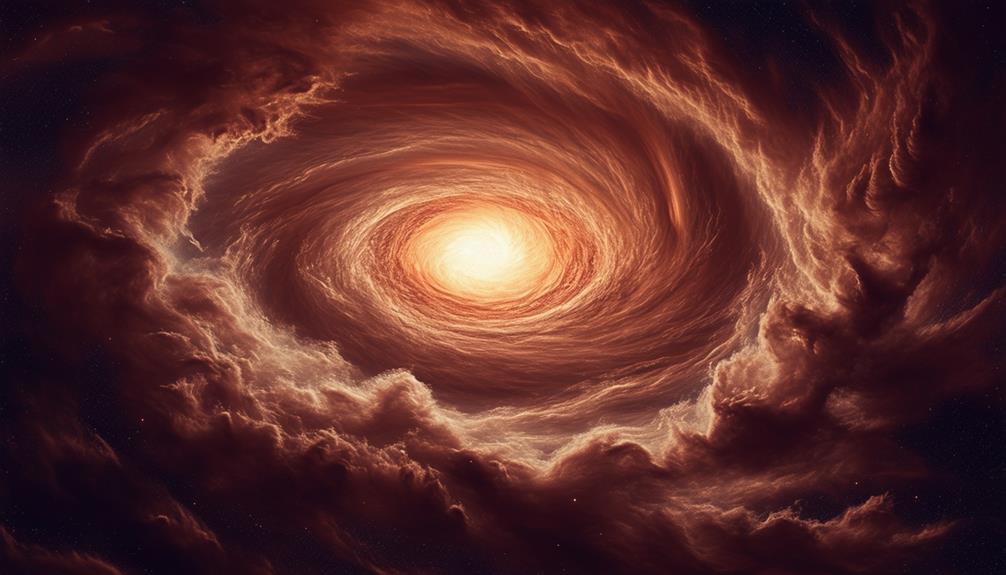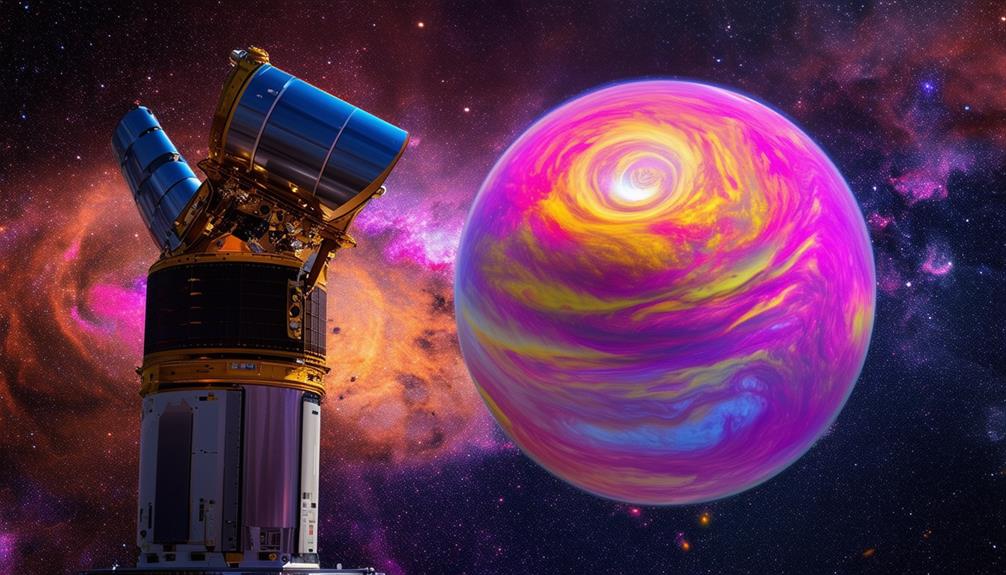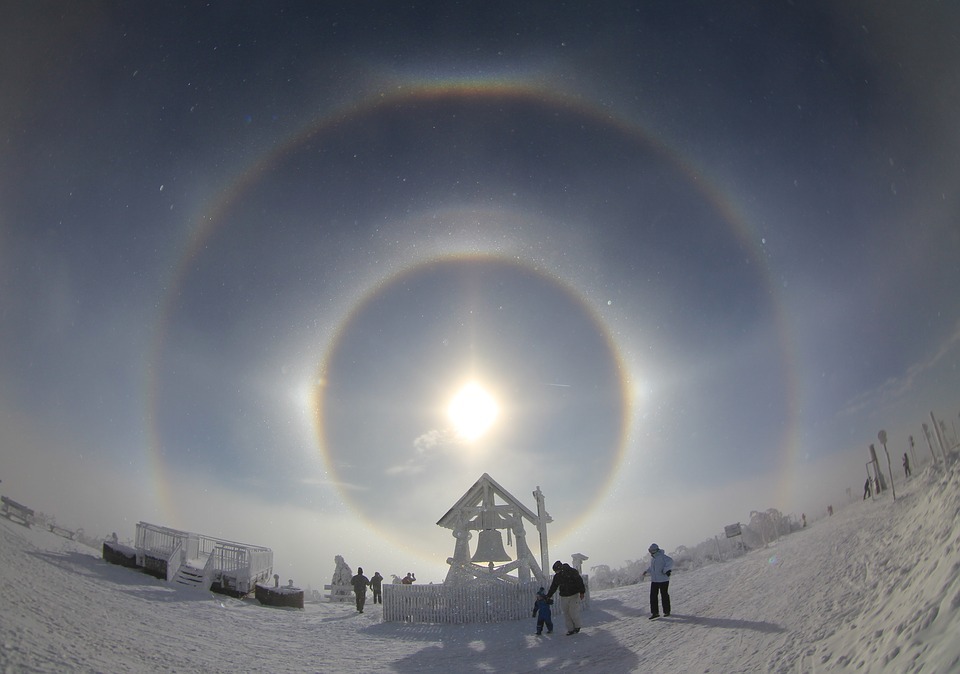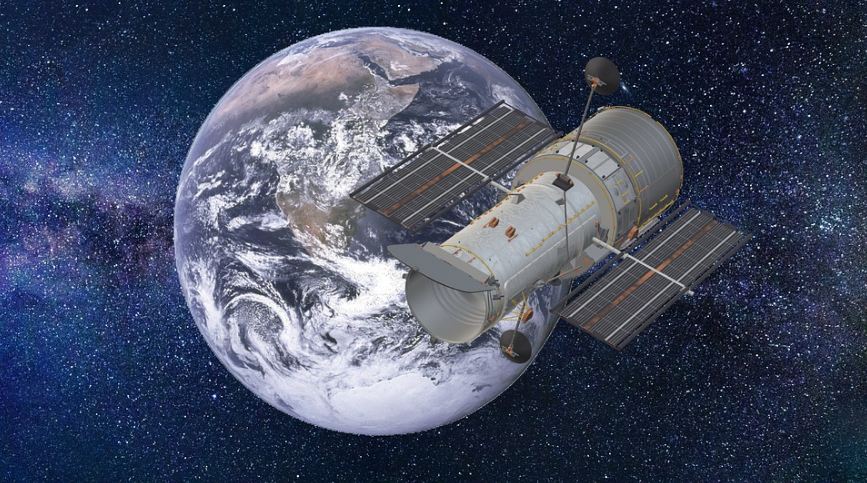Exoplanet Atmospheres: What We Can Learn From Their Composition

Investigating exoplanet atmospheres reveals more than just their chemical composition; it provides crucial insights into the environmental conditions shaping these distant worlds. By analyzing elements such as water vapor, carbon dioxide, and rare materials like corundum, scientists can infer details about climate and potential habitability.
Each atmosphere narrates a unique story about planetary formation and the factors that could support life. But how do scientists decode these atmospheric secrets? Let's explore the innovative methods and instruments that facilitate this research and examine recent breakthroughs in the field.
Importance of Exoplanet Atmospheres
Understanding exoplanet atmospheres is crucial for uncovering the conditions and potential habitability of distant worlds. By analyzing these atmospheres, scientists can gain insights into the diverse environments of over 4,000 discovered exoplanets. Rocky terrestrial planets and gas giants like Neptune have vastly different atmospheric compositions, highlighting the range of possible environments in the universe.
The Hubble Space Telescope allows for the observation of atomic and molecular signatures in exoplanet atmospheres, revealing the presence of water vapor, clouds, and specific cloud materials. These observations provide a snapshot of the planet's climate and weather patterns. For terrestrial planets, identifying key components like water vapor is essential as it indicates the potential for life-sustaining conditions.
The upcoming James Webb Space Telescope will offer even deeper insights into atmospheric composition. It will enable the detection of more subtle elements and compounds, providing a more detailed picture of these distant worlds. This advanced capability will facilitate comparisons between exoplanet atmospheres and those of Earth and Neptune, ultimately enhancing our understanding of what makes a planet potentially habitable.
Diversity in Atmospheric Composition
Exoplanet atmospheres exhibit a remarkable diversity, with each planet presenting a unique blend of atomic and molecular signatures. These atmospheres can contain elements and compounds such as water vapor, providing insights into the climate and weather patterns. On some terrestrial planets, clouds may form from unexpected materials like enstatite and corundum, significantly shaping their atmospheric properties.
Water vapor is a common feature, offering a glimpse into a planet's potential to support life. The presence of clouds, especially those composed of exotic materials, influences the planet's weather systems and overall atmospheric conditions. This variety in atmospheric composition aids scientists in understanding the complexity of planetary environments across the universe.
The upcoming capabilities of the James Webb Space Telescope (JWST) promise even deeper insights into these atmospheric compositions. By analyzing exoplanet atmospheres, scientists can understand how various factors contribute to habitability and environmental conditions. This understanding is crucial for characterizing the range of planetary systems and evaluating their potential to support life. Each discovery expands our knowledge of the cosmos, revealing a more intricate view of planetary diversity in the universe.
Research Techniques and Tools

Advanced observational methods, such as ground-based and orbiting telescopes, are crucial for studying exoplanet atmospheres. Numerical simulation models are equally important for predicting atmospheric conditions. Spectroscopic analysis techniques enable the identification of the chemical composition of these distant worlds.
Advanced Observational Methods
To unravel the complexities of exoplanet atmospheres, scientists employ a diverse array of advanced observational methods, including ground-based, aerial, and space-based telescopes. Among these, the James Webb Space Telescope (JWST) stands out as a particularly powerful instrument. Leveraging its cutting-edge technology, the JWST can capture detailed data on exoplanet atmospheres, such as their chemical compositions and weather patterns.
Ground-based telescopes are also crucial, serving as a preliminary tool for identifying exoplanets and conducting follow-up observations. These telescopes utilize adaptive optics to mitigate the blurring effects caused by Earth's atmosphere, thereby providing clearer images of distant celestial bodies. Aerial telescopes, mounted on high-altitude balloons or aircraft, offer an additional observational platform. By operating above much of Earth's atmospheric interference, they enable more precise measurements of exoplanetary atmospheres.
Space-based telescopes like the JWST deliver the most unblemished views by completely avoiding atmospheric distortion. Additionally, radar beam scanning techniques are used to measure water vapor concentrations, offering valuable insights into the potential habitability of exoplanets.
Numerical Simulation Models
Advanced observational methods provide invaluable data, but numerical simulation models are equally crucial for understanding exoplanet atmospheres. These models simulate atmospheric conditions on distant planets, offering insights into their composition and dynamics without requiring surface exploration.
For instance, scientists at JPL have used numerical models to study Venus's lower atmosphere, focusing on the mixing of chemical species. By computing thermodynamic and transport properties at different altitudes, these models can replicate a wide array of atmospheric conditions. Such simulations are pivotal for predicting how gases interact and evolve under varying pressures and temperatures.
Research has generated a significant database of direct numerical simulations, especially for Venus. These models help in understanding the complex interplay of chemical reactions and physical processes in exoplanet atmospheres. By analyzing these simulations, scientists can infer much about an exoplanet's climate, potential habitability, and the presence of life-sustaining molecules. In essence, numerical simulation models are powerful tools, enabling scientists to decode the mysteries of exoplanet atmospheres and expand our understanding of the universe.
Spectroscopic Analysis Techniques
Spectroscopic analysis techniques revolutionize our ability to study exoplanet atmospheres by examining the light they absorb and emit. Utilizing spectroscopy allows for the identification of specific molecules in these distant worlds' atmospheres. Ground-based, aerial, and space-based telescopes all employ this method, making it a cornerstone in exoplanet research.
Space missions like the Hubble Space Telescope and the James Webb Space Telescope are equipped with advanced spectroscopic instruments. These tools detect atomic and molecular signatures, providing crucial insights into exoplanetary composition. For instance, analyzing spectral lines enables the detection of water vapor, clouds, and other key atmospheric components.
Here is a comparison of spectroscopic methods employed in different environments:
| Telescope Type | Examples | Key Features |
|---|---|---|
| Ground-based | Keck Observatory, VLT | Large mirrors, adaptive optics |
| Aerial | SOFIA | High-altitude, infrared focus |
| Space-based | Hubble, James Webb Space Telescope | No atmospheric interference |
Formation and Atmospheric Links
Understanding the formation of exoplanets requires examining the intricate links between their origins in protoplanetary disks and the unique compositions of their atmospheres. As planets form within these disks, various processes leave distinctive imprints on their atmospheric makeup. By studying these atmospheres, researchers gain valuable insights into a planet's history and evolution.
Detection of different molecules in an exoplanet's atmosphere can reveal the conditions under which the planet formed. For instance, the presence of water vapor might indicate that the planet migrated from a cooler region of its disk, while an abundance of methane could suggest an alternative formation pathway. These molecular fingerprints help researchers connect current observations of exoplanets to theoretical models of their formation.
With over 4,000 exoplanets discovered, linking atmospheric compositions to their formation processes is a thriving area of research. Advanced telescopes, such as the James Webb Space Telescope, play a crucial role in this endeavor. They provide detailed spectral data that can identify various atmospheric components, enhancing our understanding of how planets evolve over time.
Brown Dwarf Atmospheres

Studying brown dwarf atmospheres reveals unusual cloud structures that offer valuable insights into these celestial objects. The James Webb Space Telescope (JWST) is currently characterizing these clouds, uncovering intricate atmospheric details. These discoveries not only enhance our understanding of brown dwarfs but also shed light on the atmospheric processes of exoplanets, contributing to broader astrophysical knowledge.
Exotic Cloud Structures
Brown dwarf atmospheres exhibit exotic cloud patterns, offering unique insights into the atmospheric processes of exoplanets. These celestial bodies, possessing more than 13 times the mass of Jupiter but insufficient for sustaining nuclear fusion, provide direct clues about cloud formations that resemble those in exoplanetary atmospheres. Unlike Earth-like clouds, brown dwarf clouds are composed of minerals such as silicates and metals, resulting in distinctive weather phenomena and atmospheric dynamics.
Using sophisticated tools like the James Webb Space Telescope (JWST), scientists can gather valuable data on the atmospheric composition of brown dwarfs. The JWST's ability to capture detailed spectra enables the analysis of these clouds' intricate layers and compositions, revealing unexpected similarities and differences with exoplanetary clouds.
Studying brown dwarf cloud patterns enhances our understanding of cloud dynamics and compositions across various planetary atmospheres. Delving deeper into these atmospheres unveils how such extraordinary clouds form, evolve, and influence the overall climate of these enigmatic bodies. This knowledge is essential for constructing a comprehensive understanding of atmospheric science in the universe.
Atmospheric Characterization Techniques
To uncover the secrets of brown dwarf atmospheres, scientists use advanced characterization techniques to reveal intricate details about their cloud compositions and weather patterns. These substellar objects share atmospheric similarities with exoplanets, making them valuable for studying exotic cloud formations. Direct observations of brown dwarf atmospheres provide insights into cloud composition and dynamics that aren't easily accessible in other astronomical objects.
One of the most powerful tools for this purpose is the James Webb Space Telescope (JWST). Its cutting-edge instruments enable researchers to analyze the cloud compositions and dynamics in brown dwarf atmospheres with unprecedented precision. Using atmospheric characterization techniques, the JWST can capture data on cloud particle sizes, chemical compositions, and temperature variations.
Studying these atmospheres doesn't just inform us about brown dwarfs; it also enriches our understanding of exoplanets. Information gleaned from brown dwarf atmospheres offers valuable clues about cloud formation processes and atmospheric conditions in other substellar objects. This knowledge contributes to our broader understanding of atmospheric dynamics and cloud behavior across different astronomical contexts. In essence, by focusing on brown dwarf atmospheres, researchers are uncovering crucial information that bridges our comprehension of both brown dwarfs and exoplanets.
Clouds and Hazes Impact
Clouds and hazes in exoplanet atmospheres are crucial in determining their climate and potential habitability. By trapping heat through the greenhouse effect, they regulate atmospheric temperatures and influence water distribution, both of which are essential for sustaining life. Additionally, clouds and hazes can protect the planet from harmful radiation, safeguarding surface liquid water and potentially aiding in the development of life.
However, these atmospheric components can obscure surface features, complicating the accurate observation and study of exoplanets. This masking effect can hide critical information about the planet's surface conditions and its habitability. Furthermore, clouds and hazes can conceal biosignatures, making it more challenging to detect signs of life remotely.
On a positive note, the presence and properties of clouds and hazes indicate dynamic atmospheric processes. Understanding these processes is essential for assessing the climate dynamics and habitability of exoplanets. Grasping the impact of clouds and hazes is vital to gaining a comprehensive understanding of an exoplanet's atmosphere and its potential to support life. While sometimes obscuring, these atmospheric features are key to uncovering the mysteries of distant worlds.
JWST Discoveries

The James Webb Space Telescope (JWST) has revolutionized our understanding of exoplanet atmospheres by revealing their detailed compositions. A groundbreaking discovery by JWST is the identification of sulfur dioxide in the atmosphere of WASP-39 b. This is the first time this compound has been detected on an exoplanet, offering new insights into the chemical processes occurring there.
JWST's observations of the Trappist-1 system are equally fascinating. By analyzing the atmospheric compositions of the planets within this system, JWST has provided valuable information about their potential habitability. These observations enhance our understanding of the diversity and complexity of exoplanet atmospheres, expanding our knowledge of planetary systems beyond our own.
Another notable discovery by JWST involves HD149026b, a hot Jupiter known for its unique heavy element composition. These findings challenge previous notions about gas giants and their formation processes, indicating that there's still much to learn.
Additionally, JWST has revealed significant variability in the atmospheric compositions of giant exoplanets. By capturing detailed data, JWST allows for comparative analysis of these atmospheres, uncovering the factors that contribute to their differences. This variability underscores the rich diversity of exoplanetary environments and the importance of continued exploration.
Conclusion
By studying exoplanet atmospheres, we can uncover the secrets of distant worlds and assess their potential for sustaining life. The diverse atmospheric compositions, ranging from water vapor to exotic chemicals, reveal unique planetary environments and formation processes. Using advanced instruments like the James Webb Space Telescope (JWST), we can delve deeper into these mysteries, enhancing our understanding of the universe. Embrace this journey of discovery, and let atmospheric clues guide you through the vast and varied landscapes of the cosmos.




